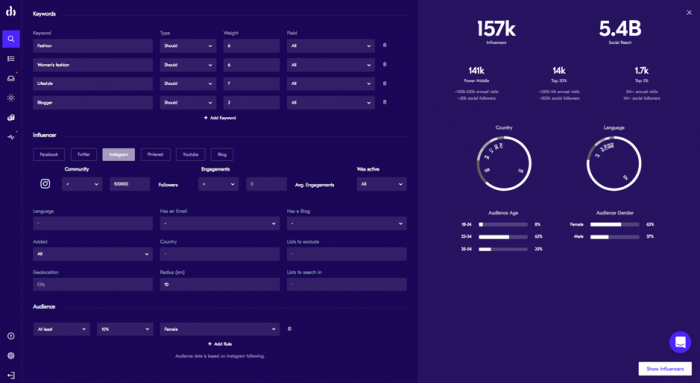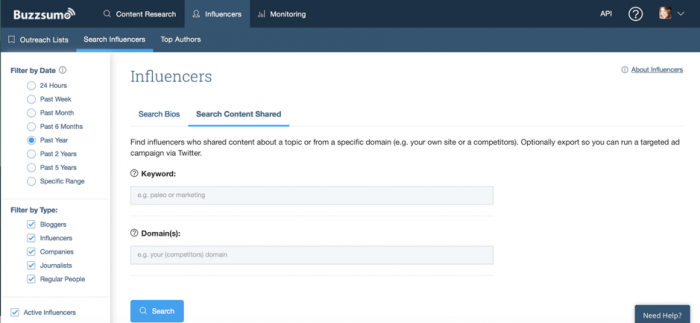Advertising is an easy way to generate more brand awareness, traffic, and engagement, but audiences are bombarded by ads from all sides. They use ad-blockers to avoid them completely, and the ones that do show up in their feeds are rapidly ignored. So, how do you reach these people? How do you generate more customers for your business without spending all of your marketing budgets on ads?
The answer: by leveraging social media influencers. Or more specifically, micro-influencers.
In this blog post, I’m going to show you how to use micro-influencers to promote your business.
Who are micro-influencers and why should you care?
Micro-influencers are bloggers, social media users, and regular people who hold influence over their audience. However, what separates them from other influencers is the size of their audience.
A micro-influencer can have anywhere from a few thousand followers to a few tens of thousands – there’s no exact limit, but generally, it’s under 100k followers on social media.
Micro-influencers have recently become very popular in the marketing and business world because many businesses – including huge global companies – have realised how powerful their influence can actually be.
In fact, in some cases, their influence makes more of an impact than a huge influencer who has millions of followers.
So, why exactly is that? How do people with a few thousand followers on social media make this much of an impact?
There are actually a few different elements at play here and it’s also important to note that in many cases, you need to work with several micro-influencers at a time to gain these amazing results. Here are some of the main reasons why micro-influencers can generate such amazing results for businesses:
- There is more trust; if someone follows an influencer with 5000k followers, they’re not going there for the hype. They’re going there for the quality and value of their posts.
- The audience is more targeted/more niche; following up on the previous point, the bigger an influencer is, the more people will follow them…just because. Because they’re famous, because their friends are following them, because they’ve heard some controversy and want to see what’s up. With smaller influencers, the audience is much more targeted – which is a very attractive proposition for marketers and businesses because it means that by using the right influencers, you are reaching your exact target audience. And if you’re reaching your target audience, your chances of converting them into customers will automatically grow
- Work with multiple influencers; micro-influencers are cheaper and easier to get than huge influencers with hundreds of thousands or even millions of followers. However, it is best to work with several micro-influencers at a time, as I mentioned earlier, so you can reach more people. But that’s actually a great thing for businesses, because it means you’re not putting all of your budget into one project and so even if one of your campaigns doesn’t work as well as you’d hoped, you’re still working with other influencers too. And by doing that, it could also lead to some long-term and fruitful collaborations with influencers who consistently get you results – for example, by turning them into your full-time brand ambassadors.
What to look for in a micro-influencer
What makes for a good micro-influencer? How do you find the right people to work with?
Here’s what to look for in a micro-influencer:
- Their location: if your business operates in certain areas, then you need to make sure that any influencer you work with has an audience in that area – you want to be able to reach people that not only want to buy your products or services, but actually can buy them
- Their content: what type of content do they usually post on their blogs or social accounts? Is it in line with your niche/industry and your target audience?
- The content they share: what types of content do they usually share? Like before, is it in line with your niche and target audience? Plus, are they posting any controversial, inflammatory posts or views that you don’t want to associate with? Read about PewDiePie to see how some influencers can become quite problematic…
- Their engagement: are they engaging with their audience regularly? And most importantly, is their audience engaging with them? For example, an Instagram micro-influencer with 5k followers could get 500 likes per post in average, while another might have 15k followers and generate about 10 likes per post – who is the better option for an influencer marketing campaign? The one who reaches 3 times as many people (in theory) but that people don’t engage with, or the one with a relatively small audience, but who is incredibly (and consistently) engaged?
- Their audience: perhaps most importantly, you need to make sure that any influencer you work with reaches your target audience.
To find social influencers more easily, you’ll need to use a good influencer marketing tool – i.e. one that allows you to search for influencers based on their content and their audience and that provides engagement stats.
Try using tools like Upfluence, which allows you to create very in-depth searches, including analysing their audience (their location, ages, gender) and their engagement levels to find more appropriate influencers for your needs:

Or like Buzzsumo, which allows you to search for influencers based on their bios, the content they share with their audience and also lets you see at a glance what their engagement is like:

How to use micro-influencers to promote your business
There are a lot of ways that you can work with micro-influencers to promote your business – from one-off projects to long-term campaigns.
Here are some of the best ways to use micro-influencers to your advantage:
Product reviews and sponsored posts
For one-off projects, you can leverage the influencers’ clout and reach to promote your blog/website, and your products or services with product reviews and sponsored posts.
For example, you can send them free products/experiences with your services and discuss the possibility of a sponsored post on social media, or of a product review on their blog.
But, in most cases, you’ll have to also pay them for their services as this is one of the best ways that a micro-influencer monetizes their reach.
Try to work with influencers that genuinely like your products or service; and most importantly, let them be authentic.
Build a tribe
Another way to build powerful influencer marketing campaigns is to turn the influencers you work with into your brand ambassadors.
This is a long-term strategy and one that can yield amazing results for your business.
One of the best examples of this tactic in practice is the way clothing giant Asos uses Instagram micro-influencers to promote their products.
The influencers are knowns as “Asos insiders” and have Instagram handles like “asos_(their name)”.
They have anywhere from a few thousand followers to around 100k and they help generate thousands of likes and comments for the popular brand.
For example, Syanna Laniyan, a French Asos Insider posts images with her wearing different Asos products regularly and generates over 500 likes on all her posts:
She’s one of many such insiders helping promote the brand – both women and men.
Leverage user generated content
Brands can also send micro-influencers their products (or services/experiences) in order to generate social media buzz about them through user generated content.
One of the best examples of this tactic in action is the #LetHawaiiHappen campaign from the Hawaii Tourism board.
They partnered up with micro-influencers who were locals of Hawaii in order to spread awareness of their campaign through beautiful images of real experiences. Over the year, they generated 100k posts on the subject and have found that the majority of the people who saw their campaign (65%) planned a trip to Hawaii within the next year – you can read more about their results in the study I linked to above.
Conclusion
Micro-influencers can prove to be an incredibly powerful tool for brand awareness and generating engagement and new customers for your business – more so even than some of the top influencers in the world.
So, what kind of campaigns would you start with micro-influencers?



